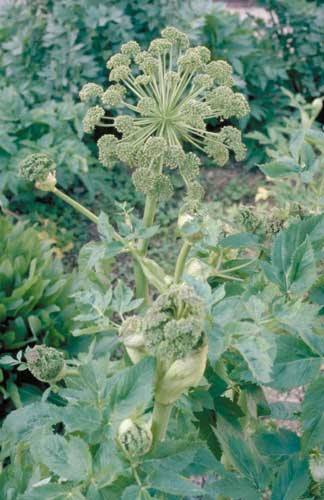From France’s farm country, Julia McLean writes about the art of making liqueurs from herbs and fruits, plus she offers up some divine recipes.
The day I helped to kill the pig, I learned such a lot.
The pig was to be dismissed with a sharp blow to the head with a masse, a sledge-hammer, wielded by my trusty gardener Joel. The death-blow was administered at his parent’s farm and I was invited along to help out and learn how to make hams and sausages.
As I arrived, Joel’s mother was staggering along the path towards me, her bandy legs bowed by the weight of the wooden yoke she bore on her shoulders with its two 10-litre pails of steaming water dangling down. The men swiftly doused the fire which had been lit with straw to burn off the pig bristles. The day proceeded from there and that is another story.
At the end of the day’s work came another ritual – the aperitif, that pre-dinner drink that builds up your appetite. We had a home-made pommeau – a kind of apple sherry which was too sweet for me, but the array of bottles filled with coloured liquids I espied on the shelf looked tempting so I asked Mrs, Taquet what they were.
“Home-made liqueurs,” she told me. These are usually sipped after a meal, and she had mint, tarragon, thyme, aniseed, cherry, raspberry, blackcurrant, and more. She let me try one or two – to die for! Better than commercially produced liqueur because they had nothing added and seemed to retain a truer taste of the herbs or fruits.
In French supermarkets (where wine and liquors are sold) they sell every summer alcool a fruits – alcohol for fruit – especially for people to make their own liqueurs so that produce is not wasted. However, this alcohol is sold at 45 degrees and many of the recipes call for 90 degrees which is cask strength and would be too strong for our modern palates.
The basic procedure is to soak the seeds, leaves, fruit, nuts in alcohol for 15 days, filter and add sugar or sugar syrup (corn syrup) to sweeten. You could use vodka which has the advantage of having no taste or white rum.
I shall give a recipe as it appears in my trusty manual:
Angelica
I grow this in my garden – it is huge, so fills in spaces at the back of the border and against the fence.
Angelique de Niort is a well-known after-dinner drink (digestif) in Mid-Western France. I bet you just thought it was that green sticky glazed stick which decorates cakes. Trust the French to find better uses for it!
1500 kg of fresh angelica stems
2 litres of alcohol at 90%
3 kg of sugar
2 litres of water
Cut the stems in to small (2-3cms) pieces and let infuse for 8 days in the alcohol.
Filter out the leaves
Melt the sugar in the water – let cool.
Mix the alcohol with the syrup.
Filter once more through a fine cloth (cheese cloth) if the mixture is not clear.
Bottle and let it age for two or three months.
(You can always halve this recipe)
Lemon Balm Liqueur
500grs of dry lemon balm (flowers and leaves)
3 litres alcohol 45 %
30 gm coriander seeds
25 gm nutmeg
20 gm cinnamon sticks
500 gm sugar
1 litre water
Let the lemon balm steep for 6 days in 11/2 litres of alcohol.
Filter out the leaves and keep them.
Put the alcohol into a jar and keep to one side.
RE-steep the lemon balm and add the spices, leaving for 5 days more
Filter and add to the first lot of liquor.
Make a syrup with the sugar and water and mix this in with the liquor.
Let it rest 3 days.
Filter once more and bottle.
Orange Liqueur
2 oranges
1 litre of alcohol
1 vanilla pod
750grs sugar
¼ litre water
Slowly melt the sugar in the water and remove from heat before it boils
Let it cool.
Put the whole oranges and vanilla pod cut up into little pieces into a hermetically sealed jar (one with a Tupperware type lid on if you don’t have a jar use a Tupperware box)
Mix the sugar syrup and alcohol.
Pour over the fruit.
Close the jar or Tupperware box.
Let it steep for two months.
Remove the oranges.
Filter and bottle.
Allow to age a few months before drinking.
Thyme, tarragon, sage, mint, fennel and aniseed can be made according to the angelica/lemon balm recipe.
Blackberry and blackcurrant need to be squashed and then soaked like the oranges BUT after soaking they should be placed in a cloth and squeezed until all the juice comes out. Then you filter and bottle.
Some of the green herbs give a rather disagreeable muddy green which can be remedied by the addition of a drop of green food colouring.
Bottoms up!
Photo Credit
© Julia McLean. All rights reserved.




1500kg is over a ton and a half of angelica leaves , thats a lot to be cutting !!!!